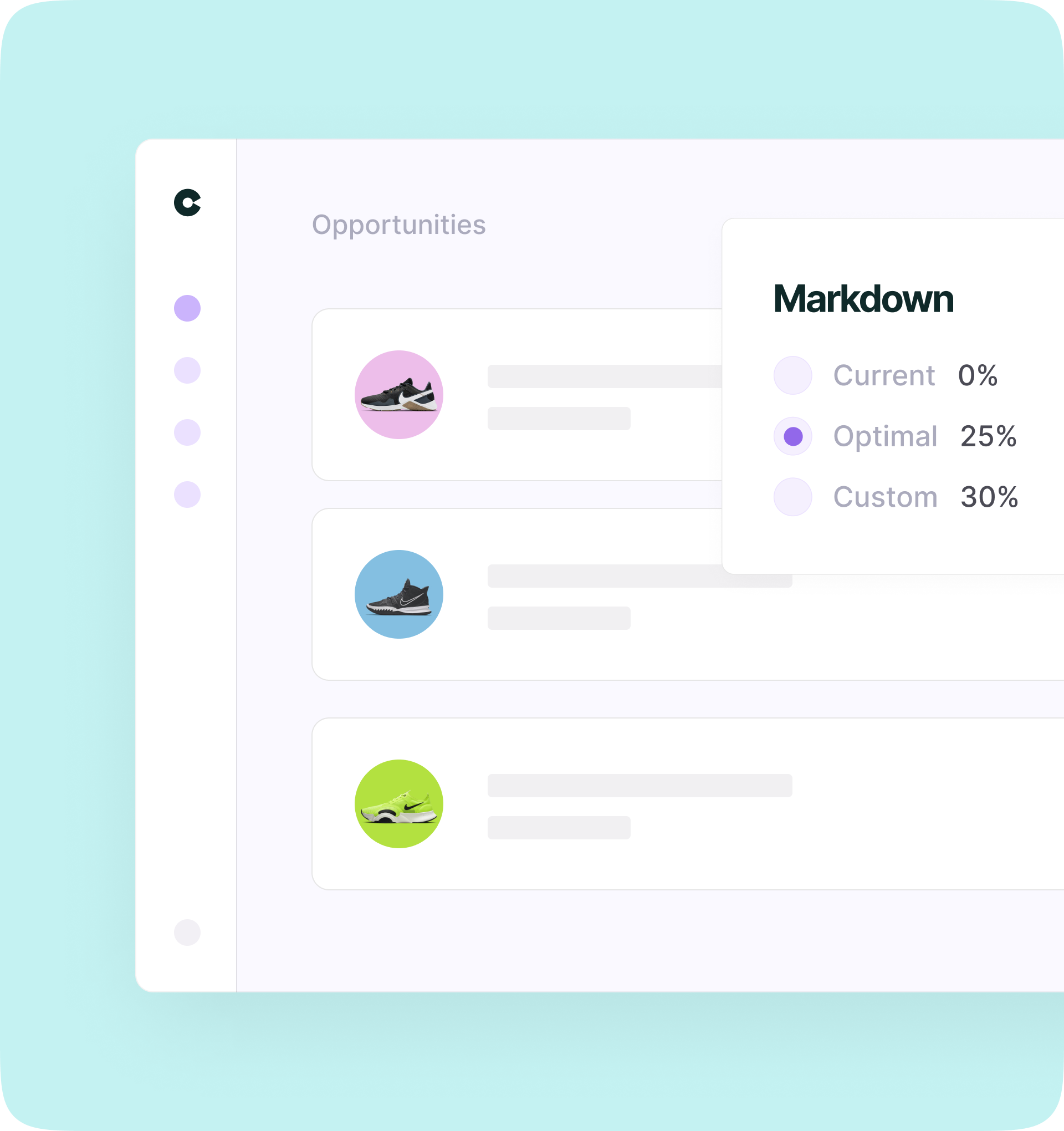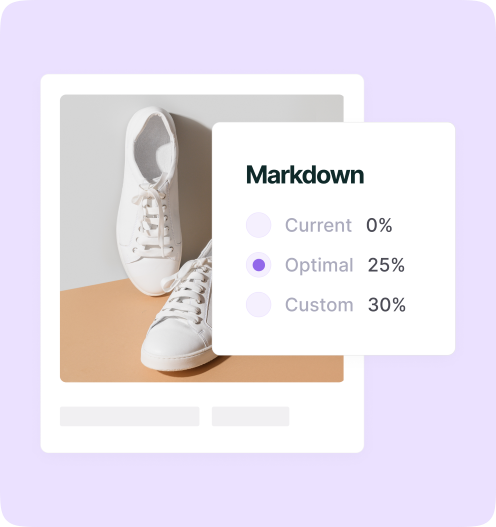The Future of Managing
Prices in Fashion Retail

Introduction
Setting prices in fashion retail used to be a practice where a straightforward set of rules, combined with gut feel, were sufficient to get the job done. However, the rise of e-commerce, fast fashion, and the growing importance of second-hand garments is pushing fashion retailers and brands to revise their strategies.
"Multiply the cost of materials and labor by X, understand reference products, see where it fits within a collection, and tweak based on experience." This method of setting and managing prices worked for decades. Yet today, with shorter seasons and shifting consumer behaviors, this approach falls short.
The shift from pricing based purely on cost to one that reflects the product's perceived value was inevitable. But how do you set markdowns in a way that balances profitability with competitiveness in this rapidly evolving environment?
The stakes are higher than ever. The challenge is not just setting prices at the start of the season, but adjusting and managing markdowns throughout the sales cycle, particularly during critical end-of-season periods.

Why Pricing and Markdown Strategies Need to Evolve
The process of managing markdowns in fashion retail is fundamentally changing. Trends cycle faster, consumer preferences are more unpredictable, and markdowns now need to be made with speed and precision to minimize the risk of excessive stock or missed opportunities.
Fashion retailers must update prices and markdowns frequently, not only to remain competitive but to protect margins, which are increasingly under pressure. Relying on traditional methods—manual calculations or legacy systems—leads to inefficiencies and missed opportunities.
What compounds the challenge further is that consumers are more informed than ever. With digital tools enabling price comparisons across platforms, retailers must ensure their markdowns are both timely and accurately reflective of the market, while also sustaining profitability.
How Data and AI Are Transforming Markdown Management
This is where data and AI come into play. The right technology can help fashion retailers manage markdowns more strategically, performing the heavy lifting of data analysis, detecting patterns, and producing tailored recommendations.
Rather than relying solely on experience or static rules, merchandisers and planners can make data-backed markdown decisions that respond to real-time trends and sales performance.
Data and AI can:
- Analyze consumer behavior: By understanding buying patterns, AI can help retailers anticipate when demand is likely to decrease and when markdowns should be implemented to maximize profitability.
- Optimize inventory levels: AI can track sales velocity and predict when to apply markdowns to avoid stockpiling excess inventory, ensuring products are sold at the most profitable price before they lose relevance.
- Generate scenario analysis: Advanced AI-powered tools allow retailers to simulate markdown strategies, helping them understand the potential impact on both revenue and margins before making final decisions.
- Enhance sustainability: By optimizing markdown timing, retailers can avoid waste through better inventory management, reducing unsold goods that would otherwise be marked down too late or discarded.
The Path Forward: Smarter Markdown Decisions
The future of pricing and markdown management in fashion retail lies in adopting technology that not only automates manual tasks but also elevates decision-making.
By leveraging data and AI, fashion retailers can optimize markdowns to protect margins, enhance efficiency, and deliver value to customers—all while staying ahead of the competition. The brands and retailers that can successfully navigate this transformation will be the ones that continue to thrive in an increasingly competitive landscape.

An AI assistant designed for
fashion retail teams
Markmi is specifically designed to meet the unique, fast-paced, complex needs of fashion retail teams. It delivers tailored markdown recommendations and insights to help you make smarter, faster decisions that protect margins and drive profitability.
Get better results through informed & confident decision-making
Make use of data & AI to automate low-value tasks and to assist decision-makers with high-value tasks, enabling teams to focus on what they do best.
Make use of data & AI to automate low-value tasks and to assist decision-makers with high-value tasks, enabling teams to focus on what they do best.

Let data & AI take over low-value tasks and assist decision-makers with high-value tasks, enabling teams to focus on what they do best and take pride in their work.

Use AI-driven recommendations to limit overproduction, scale down stock transfers between stores or reduce leftover stock with more appropriate end-of-season discounts.

